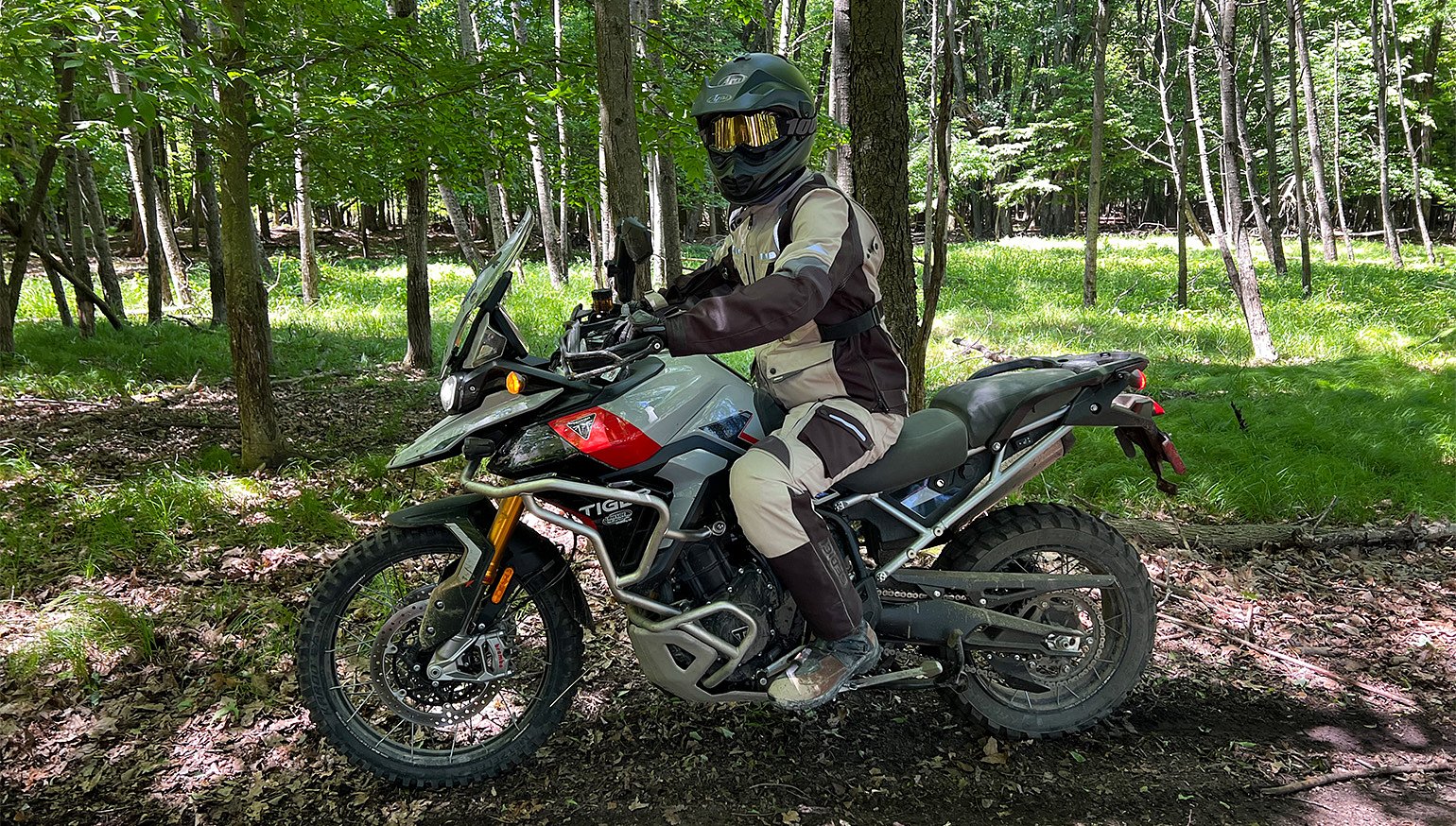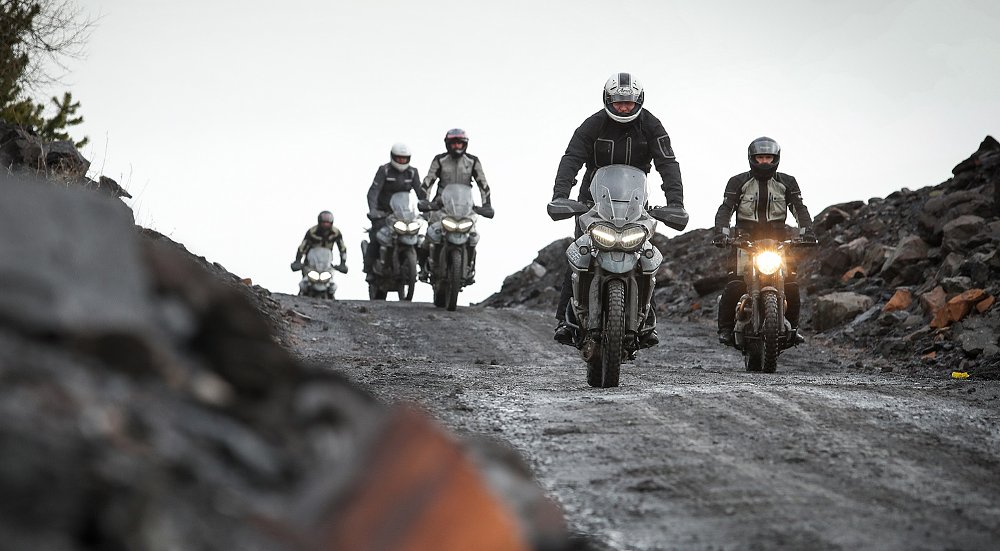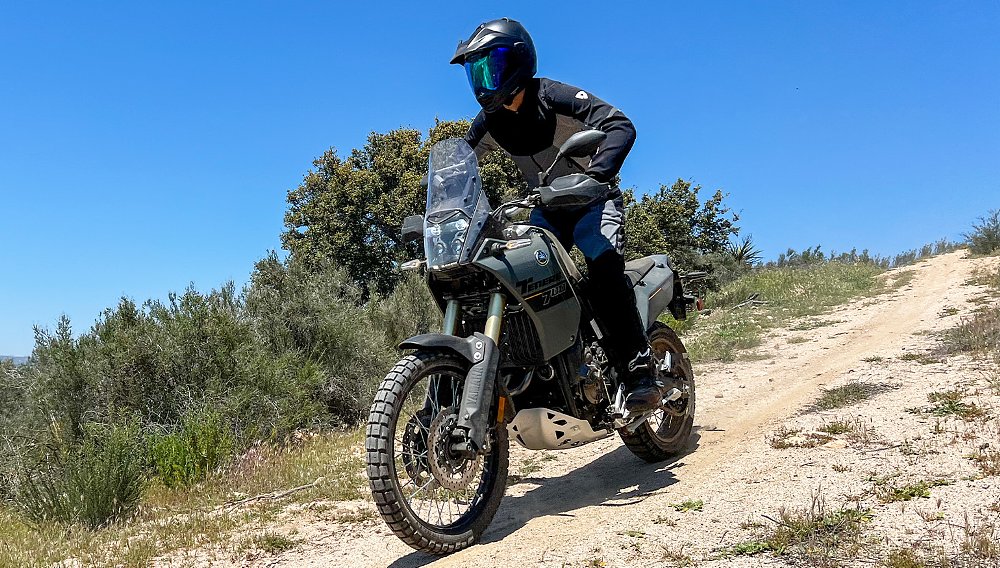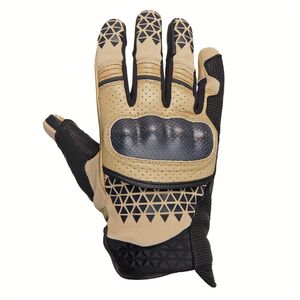There it is. Sand. Just waiting for me at the bottom of the hill, like a snare trap awaits a deer. This isn’t some shallow silt puddle, either. It’s a bottomless pit. (As far as I can tell, anyway).
My grip tightens on the handlebar. My eyes lock on the front wheel. The same front wheel that plows into the sand and deflects right — hard. I’m going down. I just know it. Sand wins again. Or so it seems.
Maybe I’m getting ahead of myself. Let’s backpedal for a moment.
Fear and roaming in Big Rapids
Fear is a great deterrent. It’s also a great motivator. It can be crippling. It can also be thrilling. (Just ask any horror movie buff). When it comes to adventure riding, nothing strikes more fear into my fragile little heart than the ‘S’ word. The mere mention of the gritty, loose stuff triggers an all too familiar response. Some call it butterflies in your stomach, but it’s more like an adrenaline and cortisol cocktail churning in my gut.
That’s my reaction when the word “sand” tumbles out of Jeff Stanton’s mouth. All that internal turmoil, despite our comforting surroundings.
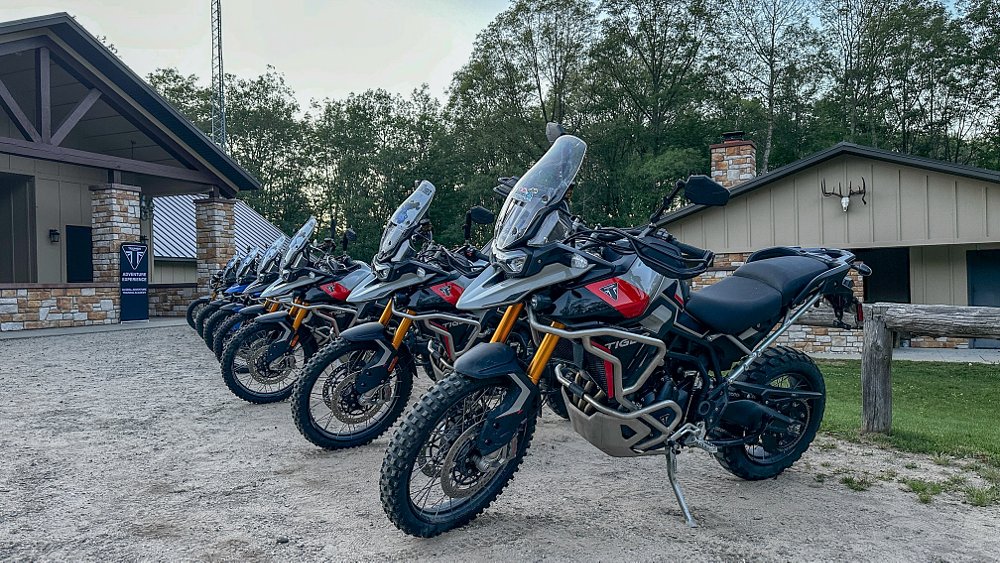
About an hour’s drive outside of Grand Rapids, Michigan, lies the small township of Big Rapids. The population numbers in the quadruple digits. The distance between most properties measures in the miles, not blocks. Two Hats Ranch is a fine example, with its five-star hunting lodge sitting on more than 1,300 acres of land.
Jack pines and maple trees line the heavily wooded trails. Dappled sunlight streams through the thick canopy above. A doe and fawn graze in a nearby meadow. I’m not here to bag a 10-point buck, though. I’m here to tame an entirely different beast; an internal one. Fear.
Luck just so has it that Two Hats also functions as the base camp for Jeff Stanton’s Adventures (JSA). If you don’t know that name, you probably weren’t a Supercross fan in the 1980s and ‘90s. Earning the nickname Six Time, Stanton compiled three AMA 250 cc Supercross championships and three AMA 250 cc Motocross titles in 1989, 1990, and 1992. With that kind of trophy case, it’s no wonder riders near and far travel to Big Rapids to learn from Six Time himself.
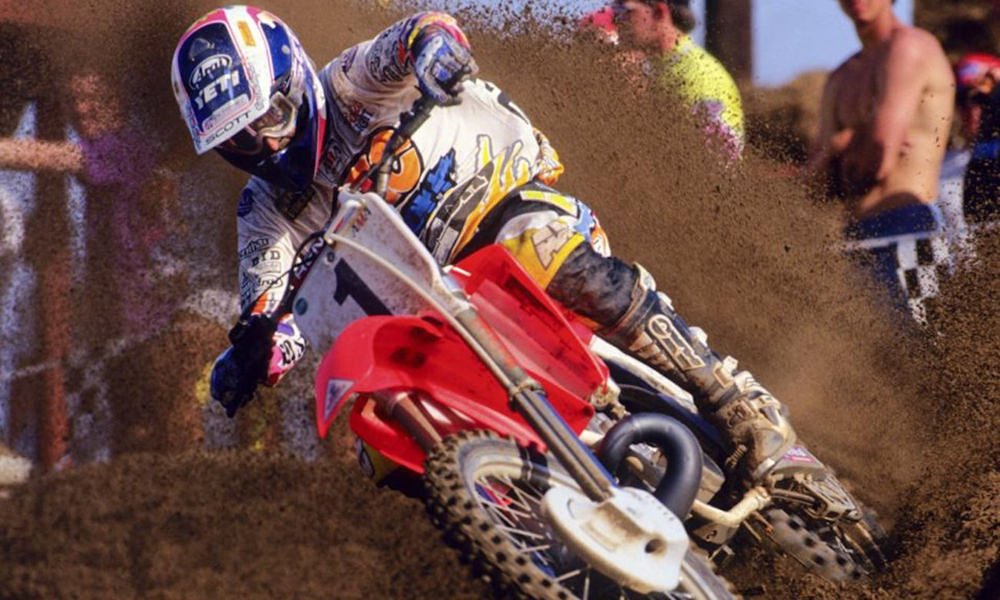
That’s the reason JSA multi-day adventure tours are so highly regarded and in demand. In recent years, Stanton has integrated more training courses into the program’s annual schedule, especially after gaining Triumph Adventure Experience accreditation in 2022. For my purposes, the Level 1 ADV class was the suitable starting point, even if my arch nemesis — sand — is a core component of the course curriculum.
Calm before the (sand) storm
All attendees arrived at the ranch the evening before the training day. After settling into one of the themed rooms (I stayed in the John Wayne room, for instance), all six riders in our group (Eric, Ian, Jeff, Michael, Sam, and myself) joined Stanton and assistant instructor Troy Devlin in the dining hall for a safety presentation and supper. The rations were far from scant too. The first evening’s menu included Caesar salad, chicken marsala, parmesan risotto, grilled asparagus, and cheesecake with a raspberry coulis.
“It’s our goal to over-deliver,” Stanton admitted. “People don’t expect food this nice.”
Yeah, I’ll say.
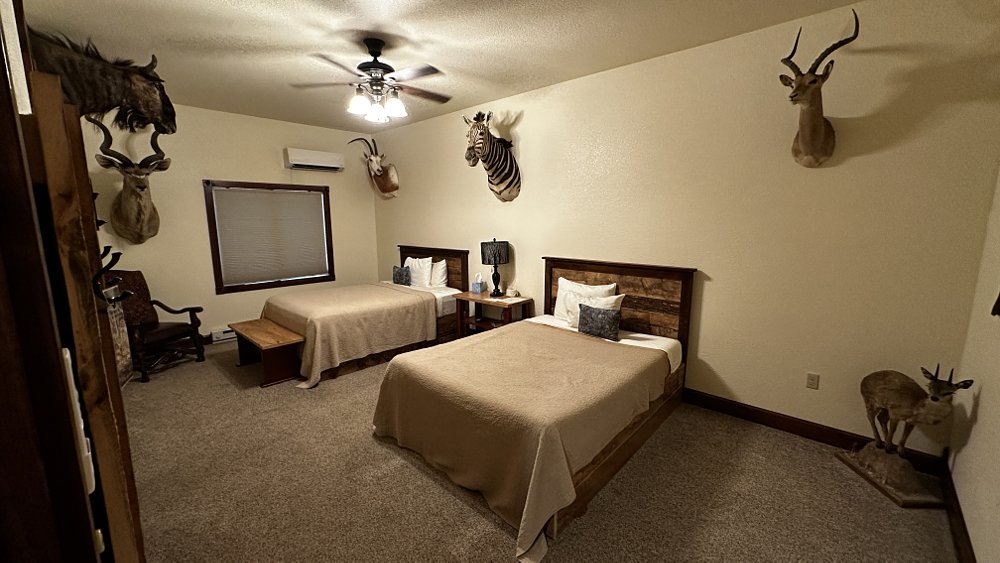
With dinner, disclaimers, and waivers out of the way, it was time to claim our steed for the journey in the morrow. JSA’s fleet features Triumph’s Scrambler 1200 XE and Tiger 1200 Rally Pro, but Tiger 900s are the most abundant model. The Rally Pro variant is, by far, the popular choice. Though, several GT Pro units accommodate shorter riders, as well. I immediately bonded with one of the Tiger 900 Rally Pros, and after minor adjustments to the levers and electronic aids, felt right at home in its saddle.
Less than 12 hours later and I was back in that very seat, awaiting Stanton’s instruction. Birds chirped in the white pines, sunlight peeked over the treetops, and anxiety flooded every fiber of my being. When would Stanton utter the dreaded word? The one that starts with ‘s’ and ends in ‘d.’ The one I dare not speak as if it were Voldemort himself. It cast a pall over the entire morning briefing like some dusty phantom. At least, for me, it did.
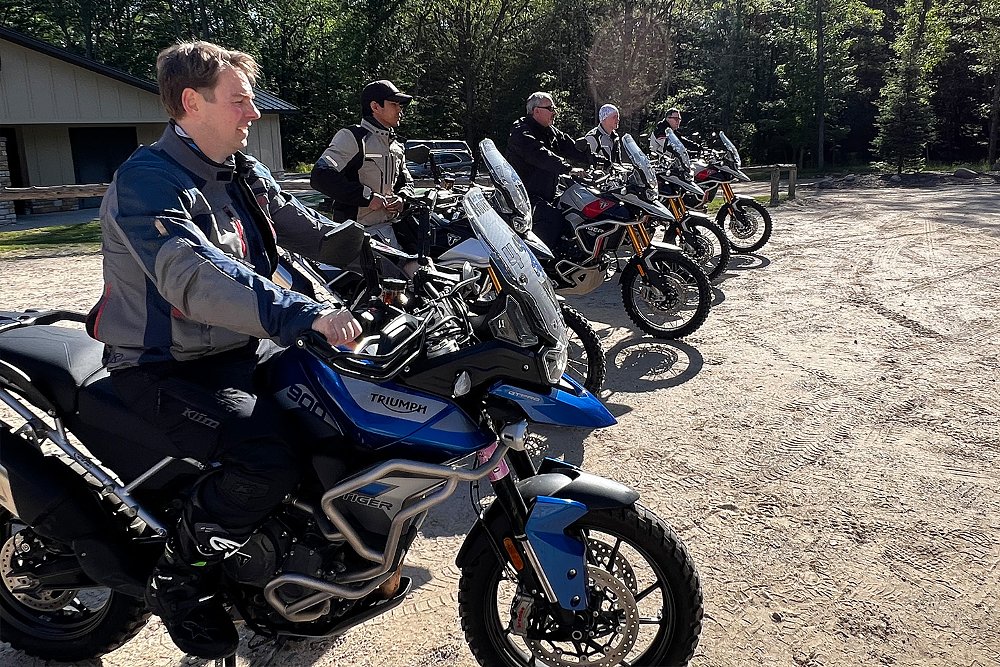
My classmates, on the other hand, listened attentively to Stanton’s first lesson: body position. They observed the way he stood on the pegs with inward-pointed toes, gripped the bike with his knees, and leaned ever-so-slightly toward the bars. However, Stanton didn’t place exhaustive emphasis on every detail of body positioning. He, instead, adhered to the aforementioned fundamentals and left the rest up to feel. That would become a theme of the day.
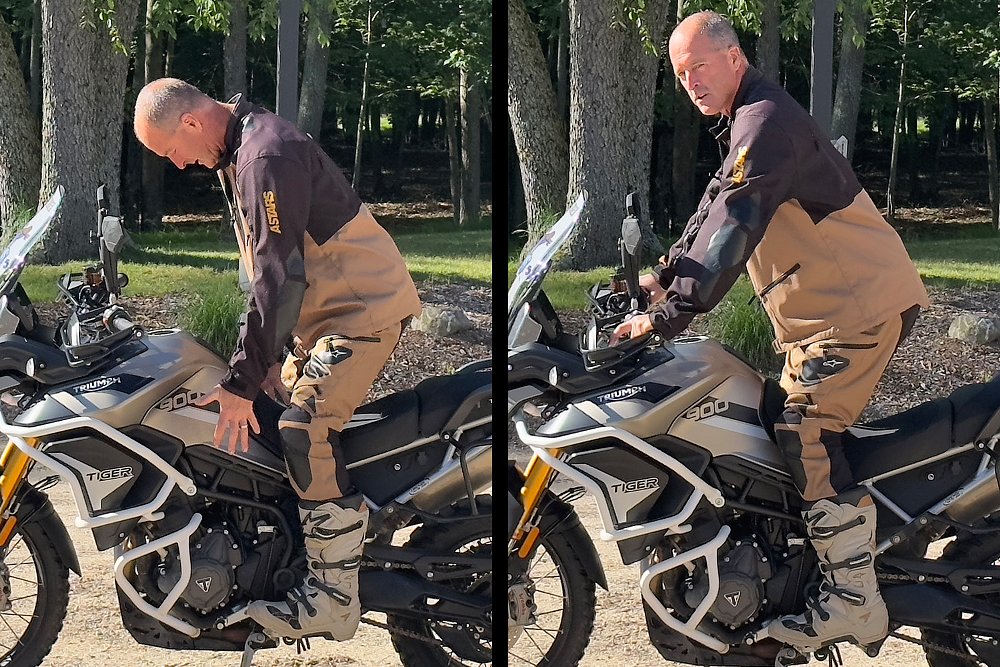
All too often, the prospect of dropping the bike plagues a budding ADV rider’s thoughts. Will I break something if I dump it? Will I be able to pick it up? Will everyone laugh at me? All adventurers, green or grizzled, ponder these questions at one point or another. Stanton dispels those fears out of the gate, instructing each rider to intentionally “drop” their bike (more like lay it down) before picking it back up. But, there’s one catch. You can’t lift it by yourself. JSA students must wait for an instructor or classmate to help.
As Stanton acknowledged, picking up a 400-something-pound bike alone saps your energy. The more energy you waste on lifting, the less energy you have for riding. Chalk one up for common sense. Amirite?
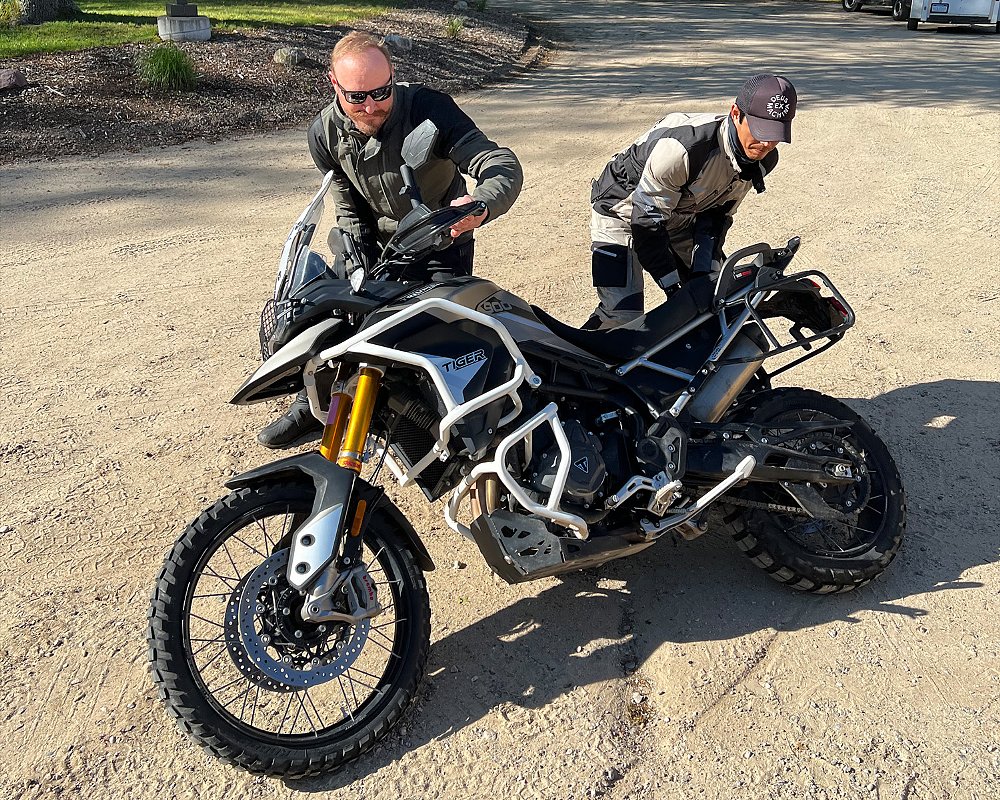
With bike-lifting practice out of the way, it was time to rev up the Tigers and mosey down to the practice range. It was also time for a familiar foe, fear, to rear its ugly head again.
Dancing around the issue
I’m no stranger to cone drills. I’ve completed my fair share on the pavement and gravel. As luck would have it, JSA’s cone drills are set up on grass. Unconventional? Undoubtedly. But sod is a much more forgiving surface in the event of a tip-over. An event that occurred early and often during these cone drills. Don’t let that scare you off. At such low speeds, each fall bore more chuckles than curses. I’ll explain.
The first drill revolved around speed control. With cones indicating each corner, navigating the serpentine path hinged on smooth clutch and brake lever modulations. Easy enough, eh? Not so fast, turbo. After each rider completed the course three times, Jeff told us to do it again, except this time, do it with just our throttle hand. After that, we were to ride the path with just our clutch hand.
“You’re kidding, right?” I exclaimed (in my head, of course).
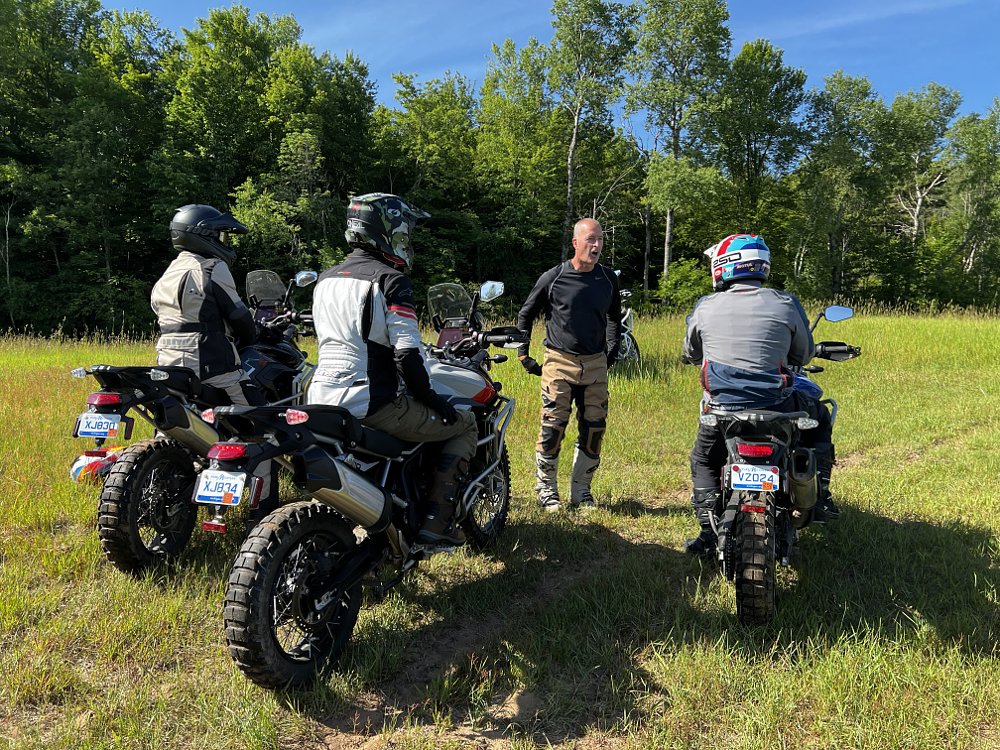
And there it was again — capital “F” Fear. It brought doubt along for the ride, too. How am I supposed to brake without my right hand? How do I stop from stalling without using the clutch? Reluctant and bordering on angsty, I released the clutch, stood up, and said a few Hail Marys. To my surprise, I tossed neither the bike nor myself earthward. Instead, my body compensated for the missing input. My knees and hips did much of the steering. My right hand administered small doses of throttle and brake. All conducted with the finesse required of such close confines.
“Fear? What fear? Just do the same thing but with your left hand,” I rationalized.
Easier said than done, bud.
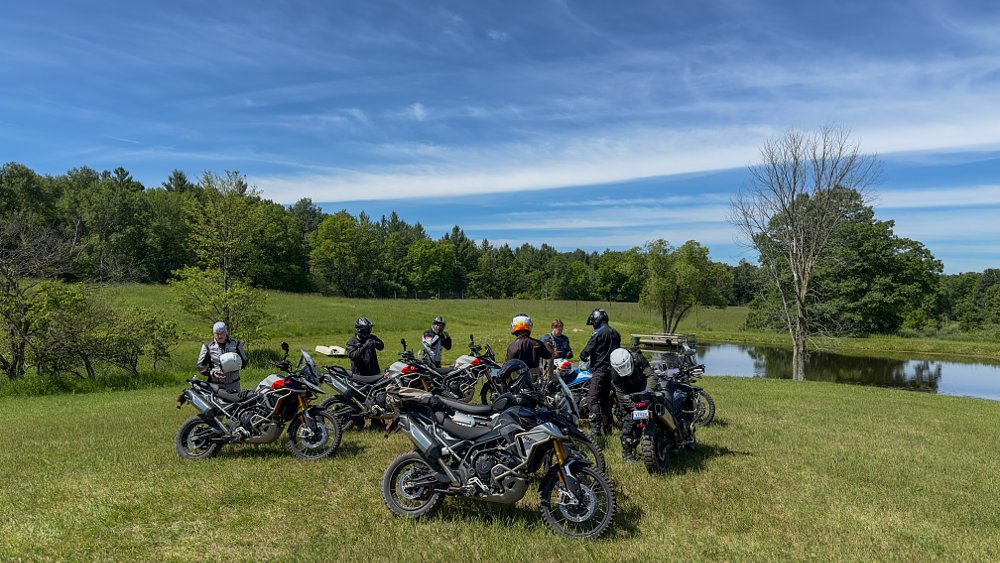
I popped into first and stood up on the pegs. Only when the Tiger started rolling, did I remove my right hand from the controls. Maintaining a set speed with the clutch alone was the lone objective, one that depended on incremental adjustments within the friction zone. That all changed with the slightest incline. Without enough momentum to mount the grade, I let out the clutch in haste. The bike didn’t just stall, it bogged and teetered, like a tree with root rot. I could’ve hollered timber between the Tiger stalling and its impact.
Still, the lesson was evident: build more momentum before the uphill section, and most importantly, don’t panic. A little help from a fellow student and the bike was back on its feet, and I was back in the saddle. Simple as that. No bruised ego to nurse. Just a lesson learned and a new skill to master. A skill that I executed on the very next go-around.
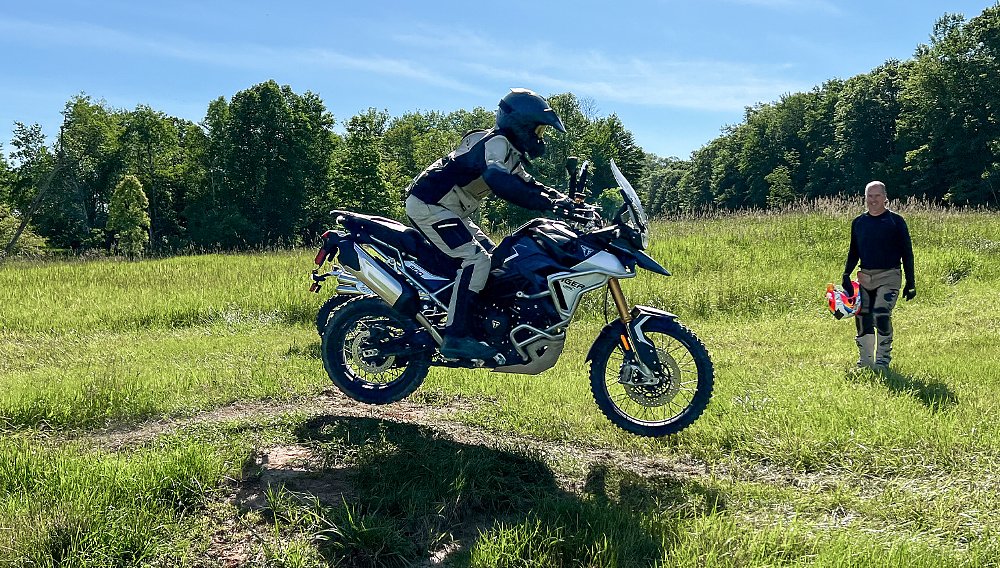
The two subsequent drills were straightforward by comparison. A set of whoops offered trail-riding practice to some and mini-ramps to others. For both groups, braking was the real measuring stick, as negotiating the turns at either end of the whoops loop required competent speed shedding.
The next station, the log jump, was initially intimidating, especially when Stanton implored us to roll over the obstacle without instruction. Although somewhat hesitant, everyone successfully cleared the log. Only then did Stanton deliver a few pointers (compressing the forks prior to lifting the front wheel, weighting the rear, etc.) before sending us around for a few laps.
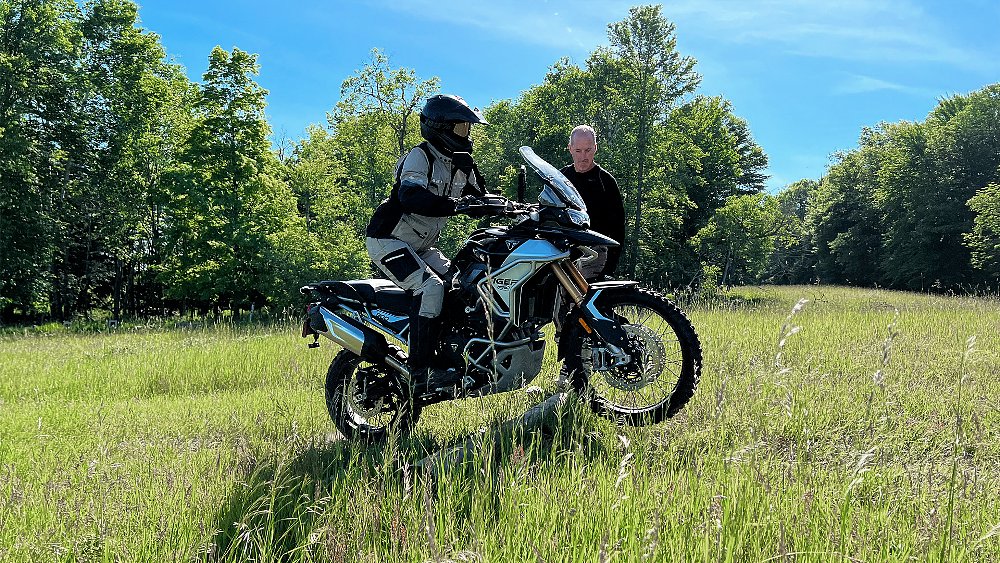
That teacher-student interaction is indicative of JSA’s training approach. We’re all adults here. Hand-holding shouldn’t be expected. Instead, Jeff gives students the room to figure it out for themselves. His tips help correct any mistakes, but each student is afforded the freedom to feel things out. In my book, it’s not just effective but efficient.
After a short breather and water break, our group gathered for one final practice drill: the circle. Given my previous performance at the Sedlak Offroad School, I thought I’d mastered this particular skill. I just needed to maintain a steady speed, turn in, and weight the outside peg. It couldn’t be easier. Boy, was I mistaken.
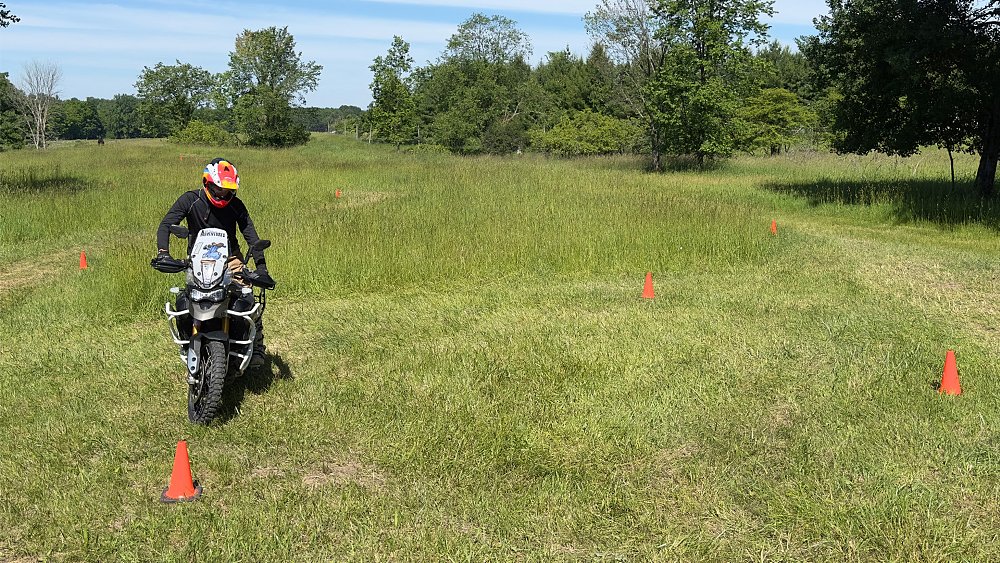
Unlike my previous attempts, this circle wasn’t set up on level ground. With a dip running through the circle’s center, modulating the clutch, throttle, and brake for the minor incline/decline proved challenging. Steering rates were less predictable as a result. If I wasn’t running wide I was running over cones. I. Was. All. Over. The. Place. I even dumped the bike in a desperate attempt to tighten my line. Practice and patience only brought improvement, but with the trail ride up next, it was time to put all of the day’s drills to good use.
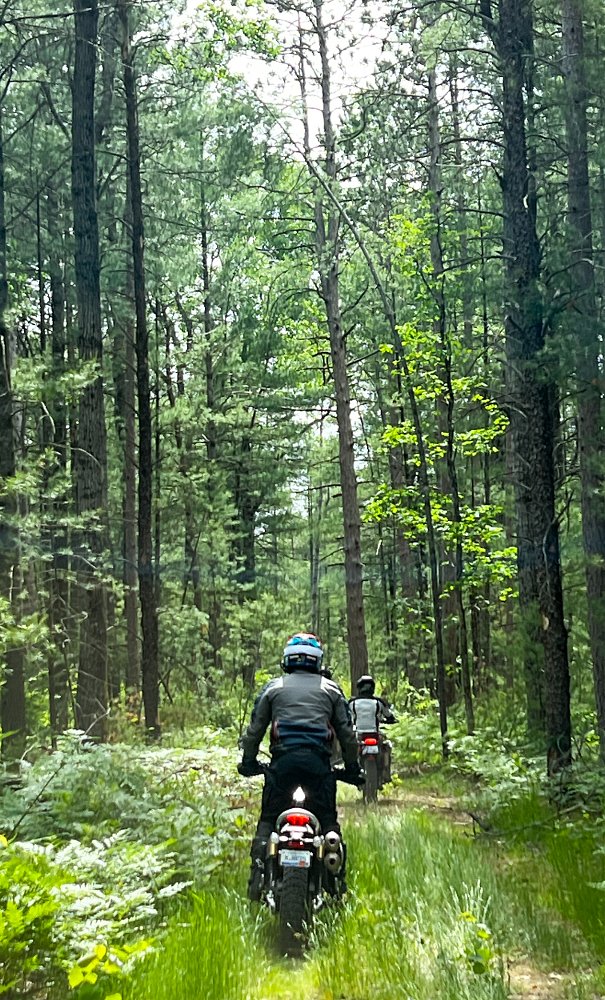
A line in the sand
There’s no fear like the fear of the unknown. That’s the type that often accompanies the trail. Where does that path lead? What if I get stuck? What if I can’t go back the way I came? Daunted by my imagined catastrophes, I seldom choose to find the answers to those questions. It’s a different story when you have a legendary rider leading the way.
Many of the roads in and around Big Rapids are dirt roads. Jeff’s route consisted of riding off-road for 20 to 30 minutes and jumping back on the pavement for another five to 10 minutes. Rinse and repeat. That method preserved the group’s energy levels, all while keeping the route engaging. The joy ride was going so swimmingly that he decided to integrate a few extra drills out on the trail.
Skid turns aren’t technically included in Triumph’s Level 1 curriculum, but Mr. Stanton determined that our group was capable of the advanced drills. If I’m confident in any of my off-roading abilities, it’s skid braking. Well, that’s only partly true. I should be more specific. I’m confident in my left-hand skid turns (ahem, while seated). Standing up, not so much. Turning right? Can I just, like, not?
Pushing beyond that comfort zone proved beneficial, however. I learned how much pedal pressure locked the rear wheel. I discovered how far I could push the slide. I better understood the bike’s handling dynamics in low-grip situations. I’d draw on that knowledge soon enough.
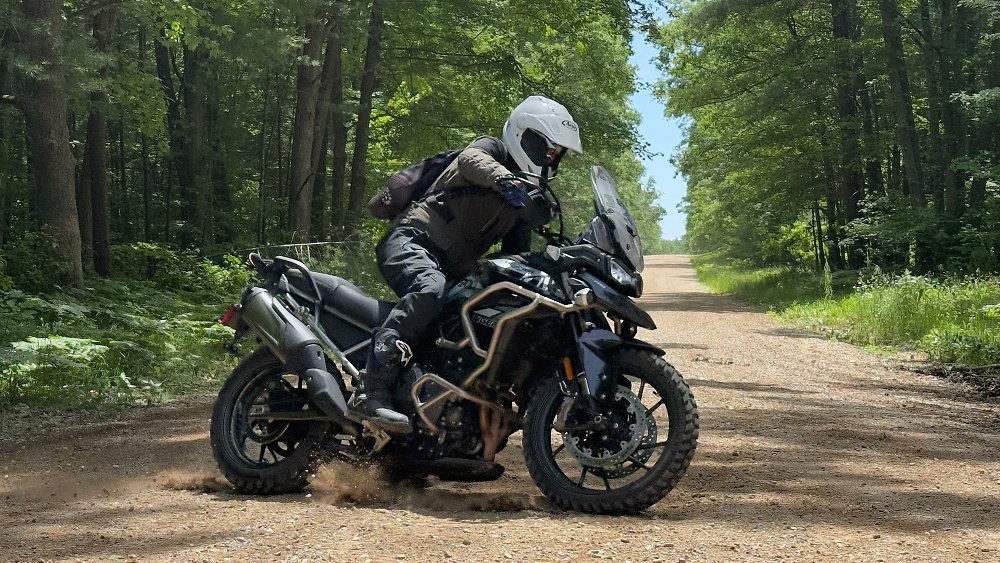
And that brings us back to the beginning. Remember? The (seemingly) bottomless sand pit.
Where was I, again? Oh, right, the front wheel deflects right. I brace for the worst. It’s a real God-take-the-handlebars moment. Then, out of nowhere, by the grace of the El Tigre 900, the front wheel veers left. I can do this. I drop my heels, collect what’s left of my composure, and throttle out of the sand trap.
“That wasn’t so bad,” I tell myself.
It never is on this side of fear.
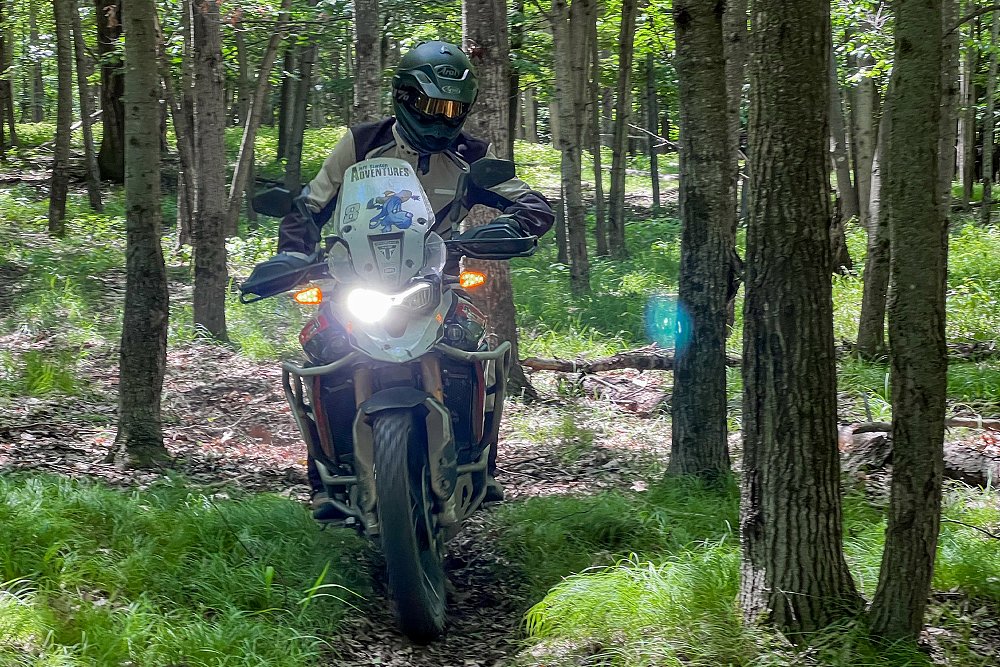
Sometimes, you have to get out of the way and let the bike do the work. That’s nearly impossible when you’re riding in fear. When you’re death-gripping the handlebar. When you’re yanking on the front brake and stomping on the rear. Fear leaves little room for any other feelings. You can’t feel the gravel crunch under your front wheel. You can’t feel the rear hook up in the sand.
If Jeff Stanton Adventures taught me anything, it’s not to ride in fear. Throughout the remainder of our route, I sought out the deepest sand sections — and found them. One sent the front wheel drifting to the trail’s edge. Another twisted the chassis like a contortionist. Jeff even led us into axle-deep mud and we emerged with nary a tip-over. It’s a wonder what riding with confidence can do.
The takeaway
Near the end of every adventure ride, I’m practically begging for the finish line. If my energy stores aren’t shot, my nerves are. For the first time, I wasn’t content with getting out while I was still ahead. I wanted more trails to tackle. I couldn’t care less if I dropped the bike along the way. The risk was worth the reward. That feeling was seemingly contagious.
At dinner, Jeff commented on the benefits of regularly riding in sand. To which Sam responded with, “Yeah, where do I find more of that?”
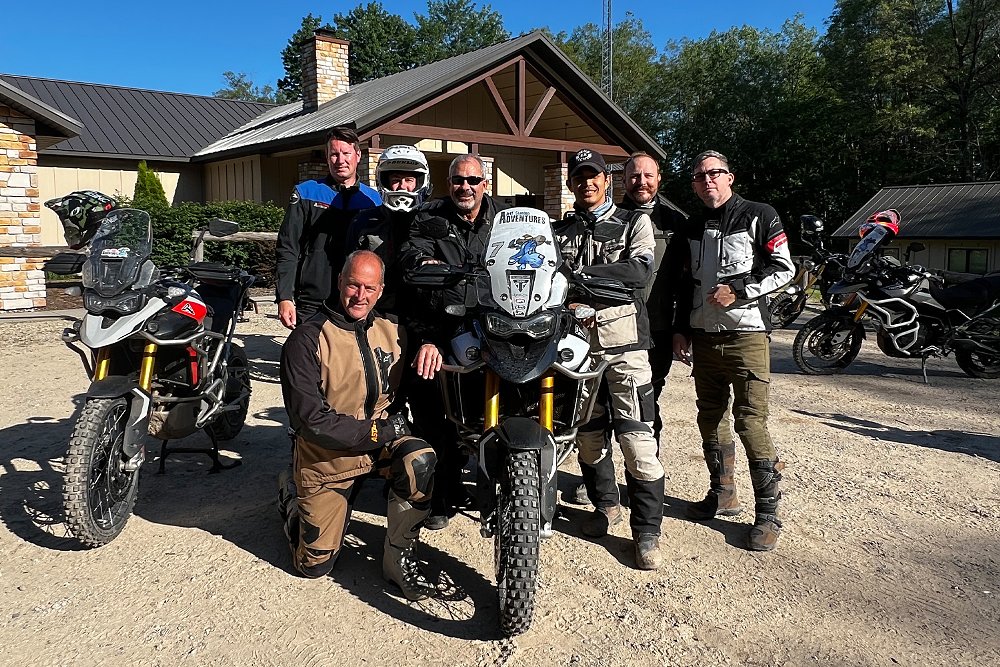
Sand. Just 24 hours before, I shuddered at the sound of the word. Now, I sought it out. Sam’s question proved I wasn’t alone. I didn’t just reaffirm fundamentals and develop new skills at JSA, I also conquered my ADV fears. That will only improve my riding beyond the class itself. That's the biggest takeaway any new adventure rider can ask for.

 Membership
Membership

